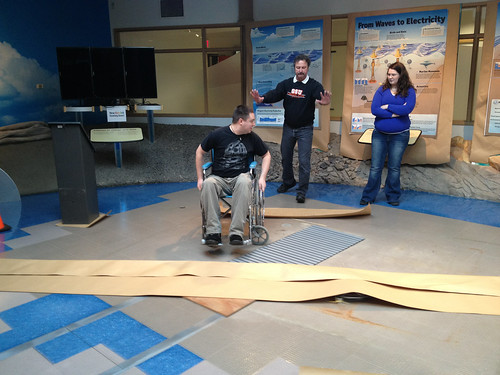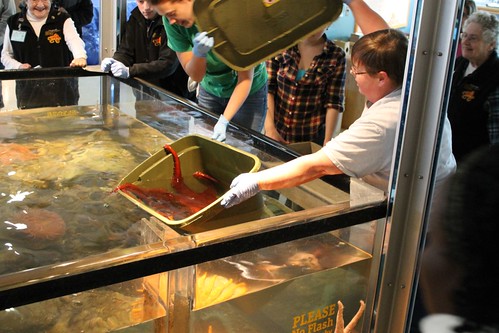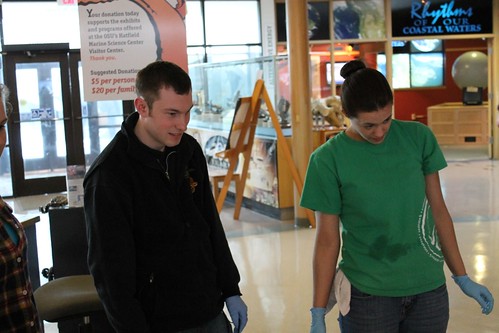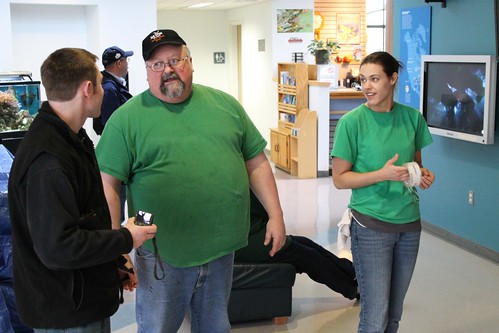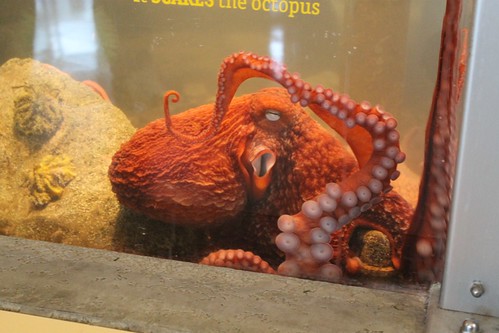Okay, so I started things off as a bit of a downer. Considering this is only the third Oceans conference to include education strands, it’s great that it’s being supported.
However, I wonder if a large scientific conference is the best place to sell outreach to scientists for a number of reasons. For one thing, the education research sessions basically competed with the scientific sessions, almost as if it was a parallel conference, scheduled at the same time so one physically could not attend both. Shawn noted that the evening and lunch workshops on outreach are often well attended, for example (at least by graduate students), but that doesn’t get our research out there.
For another thing, the education presentations focused a lot on specific program evaluation results, as I mentioned yesterday. In that way, they really were not speaking to scientists who were looking to get involved in outreach, at least beyond trying to make the case for it in terms of the personal fulfillment results and opportunities for increased funding. The sessions were by and large not aimed at delivering the skills to a broad audience that people could take back to whatever institution they worked with. The specificity of many projects showed more that such programs were possible and rewarding, without offering opportunities for people at other places ways to get involved. On the other hand, Ari Shapiro of Woods Hole (and often heard on NPR) gave many how-to examples for either partnering for general media publishing or do-it-yourself podcasting and multimedia presentations. The low-cost, do-it-yourself options of course appealed to the educators in the audience as well.
Nevertheless, for those of us that are going back to our institutions and hoping to help the scientists we work with there, there were several interesting findings from the sessions:
1) Scientists are still largely unaware of the work we do, especially that there is educational literature out there about what works.
2) All participants in these programs, educators, scientists, and the ostensible “audience” each play roles as both teachers/facilitators and learners at various times. Educators and public audiences both have frequent opportunities for reflecting on their experiences during programs. Most of this occurs via feedback to each other as both groups are fairly familiar with their roles in these situations. On the other hand, the scientists often lack such opportunities outside of program evaluations, to reflect on either of their roles, or even the fact that they play both of those roles during the experience. They probably also need tools to help them do that reflection.
3) There are a lot of great programs reaching maybe 50 teachers at a time. If each of those teachers reach say 200 students each per year, that’s still only 10,000 students, with perhaps a little more via “trickle down” to other teachers that the program teachers work with. In a country with maybe 100 million students, we have a lot of work to do. And we need a lot of money to do it. And we need evidence of these things working and ways to can scale them up wherever possible.
4) We have a bit of work to do even among our education community about the value of qualitative data and what it can tell you, including the fact that there are people out there that can help analyze that data if you have it.
5) We need more research that’s applicable to a lot of situations, not just evaluations of great projects.
I love being in an emerging field, but some days it’s not emerging fast enough.

